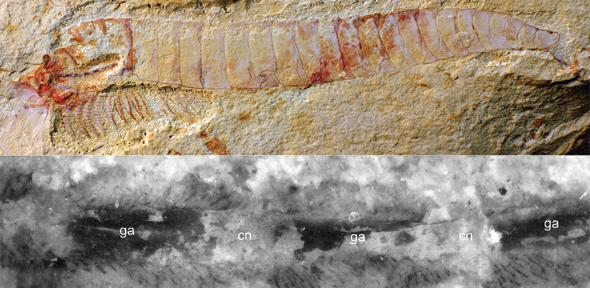
Except for losses. From Discovery:
A fossil of a 520-million-year-old animal is so well preserved that its individual nerve fibers are still visible, according to a new study on the crustacean-like creature that once lived in southern China.
The fossil represents the oldest and most detailed central nervous system ever found, reports the study, which is published in the journal Proceedings of the National Academy of Sciences. More.
The animal is a Cambrian life form, Chengjiangocaris kunmingensis, considered “an early ancestor of modern insects, spiders and crustaceans,” and its nerve chord is “similar to the spinal cord that we and many other organisms have today. Bead-like ganglia, or bundles of nerve cells, controlled the animal’s single pair of walking legs.”
The researchers noted that dozens of these nerves were lost over time, suggesting that “simplification played an important role in the evolution of the nervous system.”
See also: Devolution: Getting back to the simple life (simplification)
Stasis: Life goes on but evolution does not happen
and
Does intelligence depend on a specific type of brain (you’d be surprised)
Follow UD News at Twitter!